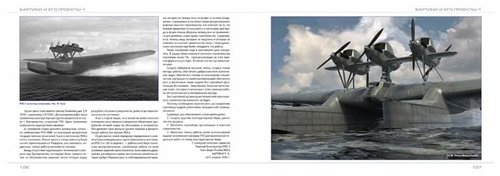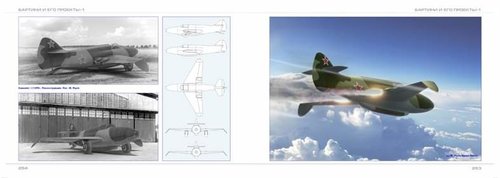gabrielorosco
I really should change my personal text
- Joined
- 10 December 2016
- Messages
- 193
- Reaction score
- 233
I had the opportunity to take a look at a new book wrote by our friend Konstantin Udalov (Ucon), developed in cooperation with the artist Marek Rys. This book is the first volume of a series of four, which will show in depth the projects of the engineer Roberto Bartini. In this first book, the author mention the projects developed in the period between 1923 and 1945, which correspond to the first series of Bartini’s projects. The book starts with a very detailed biography of Bartini, telling his history and solving some “historical mysteries” Bartini was involved. For example, Bartini claimed himself to be Italian, but documents shown in this book tell a totally different history, which I do not want to spoil. The first projects of Bartini are mainly seaplanes, starting from small and growing up to larger, more complex aircraft. From many projects, there is one which, although not built exactly as Bartini designed, it had a s econd “incarnation” at the hands of Tupolev design Bureau. The huge MTB-2 was a double-hull, six-engined patrol flying boat. It was meant to fight enemy ships at great distances. This aircraft is, in truth, the forefather of the future Tupolev MK-1 flying boat, with some changes, like a slightly reduced size. After the seaplanes, Bartini became involved in land-based aircraft projects. Among many others, the book show us the special Stal-6 aircraft. This single-engined aircraft has a special place in my review. With an unusual design, it proved to be highly maneuverable and broke the soviet aircraft speed record. Although very promising, the Stall-6 had some problems which needed to be corrected, mainly in the engine’s cooling system and a cockpit with poor visibility. The author show us how these problems were solved. Another remarkable aircraft, the Stal-7 was very successful in its purpose. This twin-engine transport aircraft was so good that some other variants such as bombers and airliners were developed. It also broke another speed record in the Soviet Union, during a 5.068 km nonstop flight. After a series of propeller-driven aircraft projects, Bartini started his journey into the jet age. In this part, we are able to uncover one of Bartini’s most mysterious projects: the Project “R”. Developed as a fighter, information about this aircraft was very rare. Thanks to the efforts of the author and the collaboration with SibNia institute, accurate informations and documents were found and its history is now in this book. With these references in hand, the artist Marek Rys was able to reconstruct the aircraft appearance, revealing the true shape of this incredible bird. Without any doubt, this book is a masterpiece in aviation literature. The quality of the text and pictures are unmatched, it provide us a deep dive into all of these projects. In my opinion, it is safe to say that this book and the series to come will be the most complete guide devoted to Bartini’s incredible works, it is a “must have” for all aviation enthusiasts and specialists.
I wish everybody a nice reading!!
I wish everybody a nice reading!!



